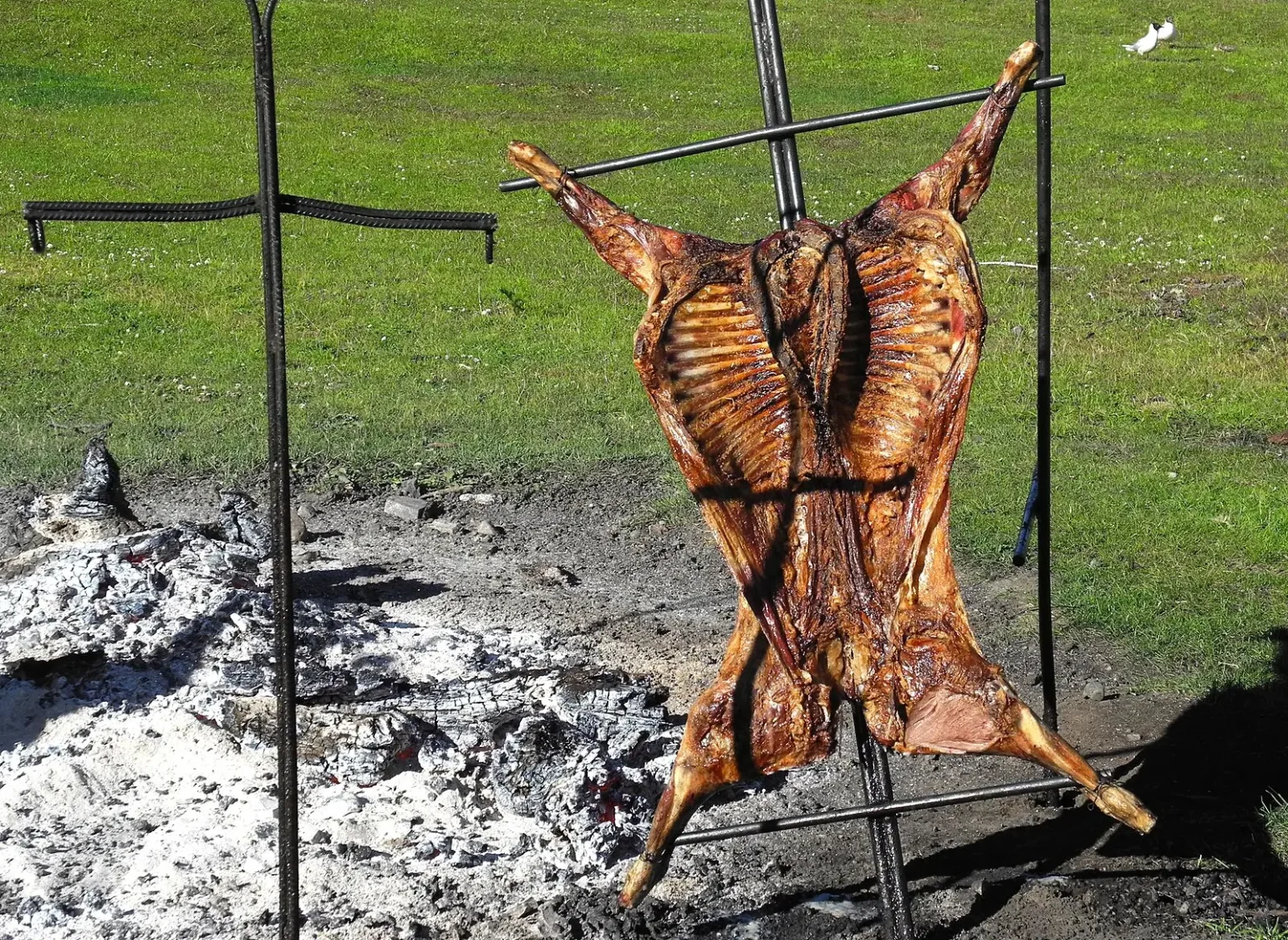
Cordero al Palo
Whole lamb slow-roasted on a spit over open fire.
Ingredients
- •Whole lamb
- •Salt
- •Black pepper
- •Herbs
- •Garlic
Instructions
Prepare Lamb
Clean and season the lamb thoroughly (30 mins)
Set Up
Prepare fire and mount lamb on spit (30 mins)
Roast
Slow roast while rotating regularly (4 hours)
Cordero al Palo is a spectacular Patagonian dish where a whole lamb is slow-roasted on a metal cross or spit over an open fire, resulting in incredibly tender meat with a crispy exterior and smoky flavor.
This traditional cooking method originated in the Patagonian region of Argentina, where Mapuche indigenous people and early settlers would cook lamb this way during special celebrations and gatherings. The technique has been passed down through generations and remains an important part of the region's culinary heritage.
Preparing Cordero al Palo requires skill and patience. The lamb is butterflied and carefully secured to a metal cross or spit, then seasoned simply with salt, pepper, and sometimes garlic and herbs. It's positioned at an angle near a slow-burning fire and rotated periodically over several hours until the meat is perfectly cooked - tender and juicy on the inside with a golden, crispy exterior.
While the traditional preparation is quite simple, some cooks add their own touches by using different herb blends or marinades. Some may also stuff the lamb with herbs and garlic before cooking, or baste it with wine or broth during the roasting process to add extra flavor and moisture.
In Argentina, particularly in Patagonia, Cordero al Palo is often the centerpiece of special occasions and family gatherings. It's typically served with simple sides like roasted potatoes, fresh bread, and chimichurri sauce. The communal nature of the dish, with everyone gathering around the fire as it cooks, makes it as much about the experience as the meal itself.
From a nutritional perspective, lamb is rich in high-quality protein, vitamin B12, iron, and zinc. However, it can be high in fat, particularly saturated fat, so portion control is important. The slow-roasting method actually helps render out some of the fat, making it a bit leaner than other preparations. Those with dietary restrictions should note that this dish is naturally gluten-free and dairy-free, though it's important to check any additional seasonings or marinades used.
